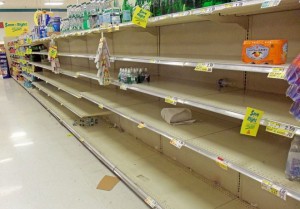 Abercrombie & Fitch seems to be in trouble. The brand’s in-store sales decreased this year, and its market value collapsed. Its value proposition doesn’t seem to be as efficient as it used to be, fashion being a constantly changing market. Even the impressive advertising campaigns with half-naked male models are not enough to ensure the high popularity of the store in North America.
Abercrombie & Fitch seems to be in trouble. The brand’s in-store sales decreased this year, and its market value collapsed. Its value proposition doesn’t seem to be as efficient as it used to be, fashion being a constantly changing market. Even the impressive advertising campaigns with half-naked male models are not enough to ensure the high popularity of the store in North America.
However, the analysis seem to be different if you consider another market, for example th European one. Abercrombie has a very strong brand image, why seems to be working better overseas than in North America. Having discussed this with other Europeans, we found that Abercrombie represented the American youth lifestyle, and was still creating excitement around its products. The brand’s presence is more recent in Europe than in the U.S.A (the first French store opened this year only in Paris) and there is less direct competition.
Therefore the world market supports the company’s profit with an increase of direct-to-customers sales worlwide this year. We can see that the same brand, advertising its products the same way, can face different outcomes and success in geographically distinct markets. Abercrombie’s high prices don’t seem to turn down European and Asian customers because the image of the brand is stronger.
Sources: BBC News article & Bloomberg article





